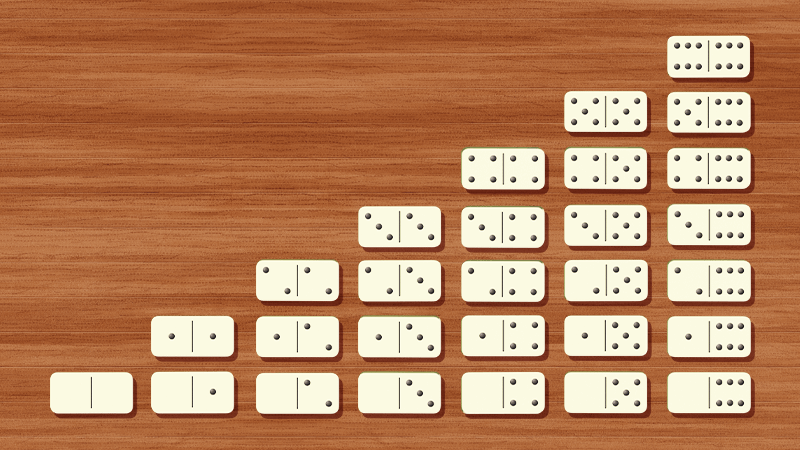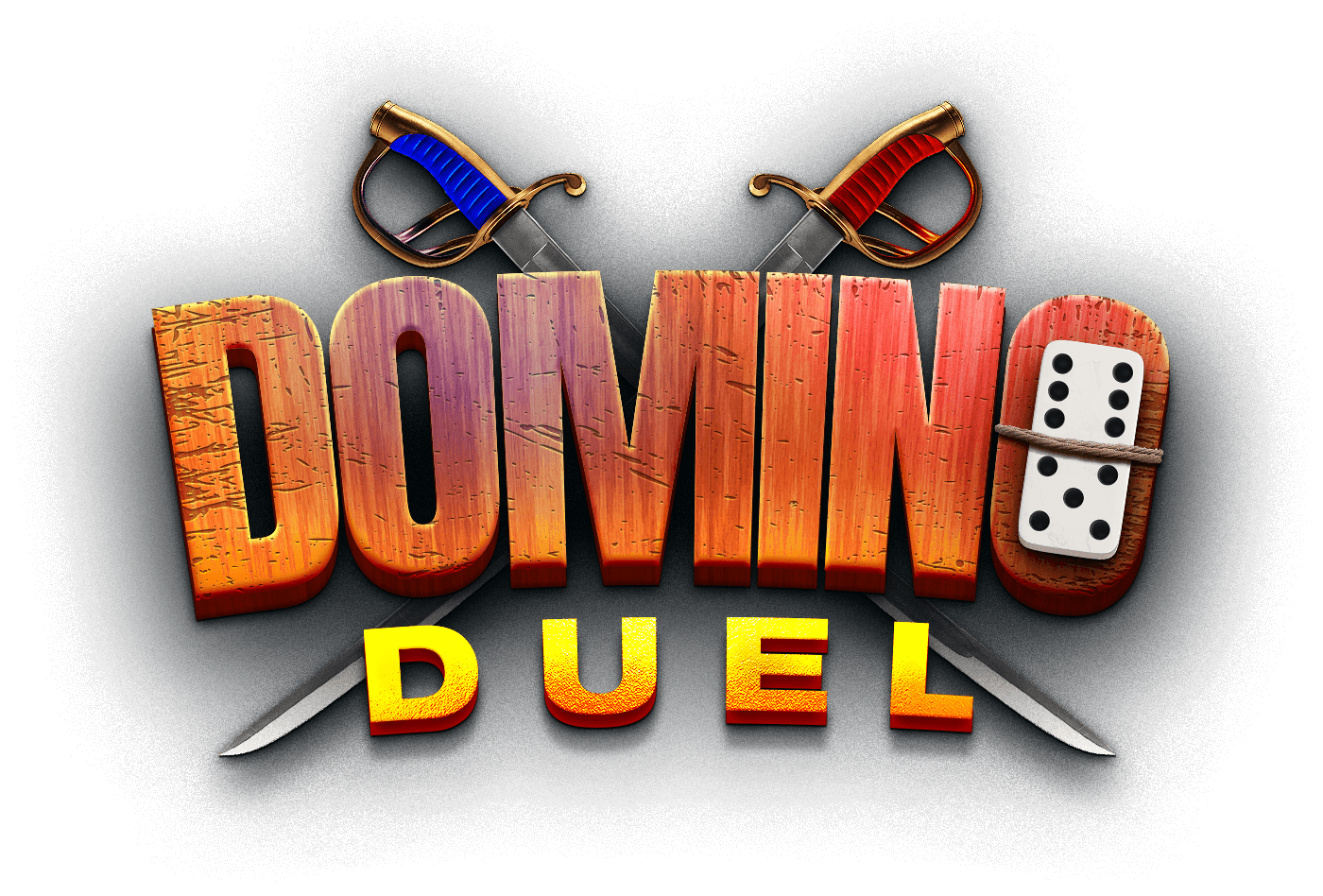Dominoes rules
Table of contents

The domino tile is rectangular and divided into 2 equal halves by a line in the middle. Each half (also called end) either has a certain number of dots displayed on it or is blank. Each of the 28 tiles in a standard domino set is unique and represents every possible combination of numbers between 0 and 6.
Sets
There are larger sets suited for more than 4 players:
- Double-nine: 55 tiles with all combinations of the numbers from 0 to 9
- Double-12: 91 tiles, pairs from 0 to 12
- Double-15: 136 tiles
- Double-18: 190 tiles
The names of the domino sets come from the highest-value pieces in each of them.
Tiles
A tile with the same number of dots on each end is called a double. There are 7 doubles in the traditional set: double-six, double-five, etc. Respectively, a tile with different numbers is called a single.
The tiles are named after their values. For example: 3-4 (🁊), 2-5 (🁄), 6-1 (🁜).
Every tile with two different numbers is a part of two suits. The tile 3-4 is a member of the suit of threes and the suit of fours.
The classic domino tile is in black and white colors. All dominoes in a set have the same back design.

How to play
The general rule for placing a tile on the table is that one of the ends must match the number of dots so the 2 pieces can connect. You can add tiles to both ends of the layout. Doubles are put on 90 degrees, singles – horizontally.
Players place the game pieces on the table in a way that the equal ends can connect. Only ends with the same number of dots can be linked.
When the game is played by 4 players, each receives 5 tiles to start the round. Players take turns in a clockwise direction.

Draw and block
- Draw – you are forced to draw tiles from the boneyard until you get one that can be played. If the boneyard is empty, you skip a turn.
- Block – you skip a turn (drawing from the boneyard is not allowed). If your opponent also can’t put another tile, the round ends.
Play Dominoes
Domino Duel is compatible with iOS and Android.
Don’t forget to return daily for additional rewards and bonuses.
Scoring
When playing Block mode, the player with the least amount of tiles in their hand wins the round. If both players have the same number of pieces remaining, the player who played the last domino wins.
The player who first reaches a particular amount of points wins the game.
Other variations
Several domino connection games utilize a different matching rule, which requires the touching ends of the tiles to have a particular sum of the dots.
Generally, players score points at the end of a round. But there are variations where points are rewarded for making specific combinations of tiles in the layout.
Here are some examples of famous domino games:
- All Fives (Muggins) – Players are rewarded points by making the ends of the layout add up to a multiple of 5 after playing a domino. Players must announce the points they score.
- Mexican train – It’s played with a double-12 set. Players must add tiles only to trains they are allowed to. A train is a part of the layout where tiles can be put. There are private and public trains.
- Chickenfoot – It’s played in rounds using the double-9 set. Each round starts with a different double domino placed in the middle. The first round begins with the double-9, the second with the double-8, and so on.
- 42 Dominoes – A trick-tacking domino game. Each player bids the number of tricks they will win. The player with the highest bid names a trump suit.
This product is intended for people over 18 years of age for entertainment purposes. This game includes in-app purchases. Practice or success in social casino gambling does not imply future winnings in real money gambling and gambling in general.


